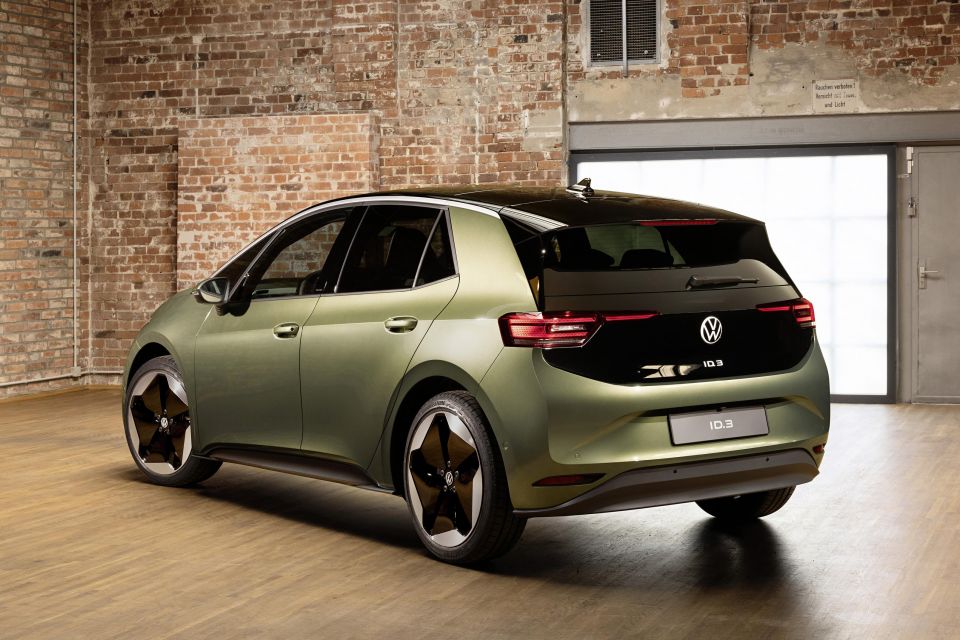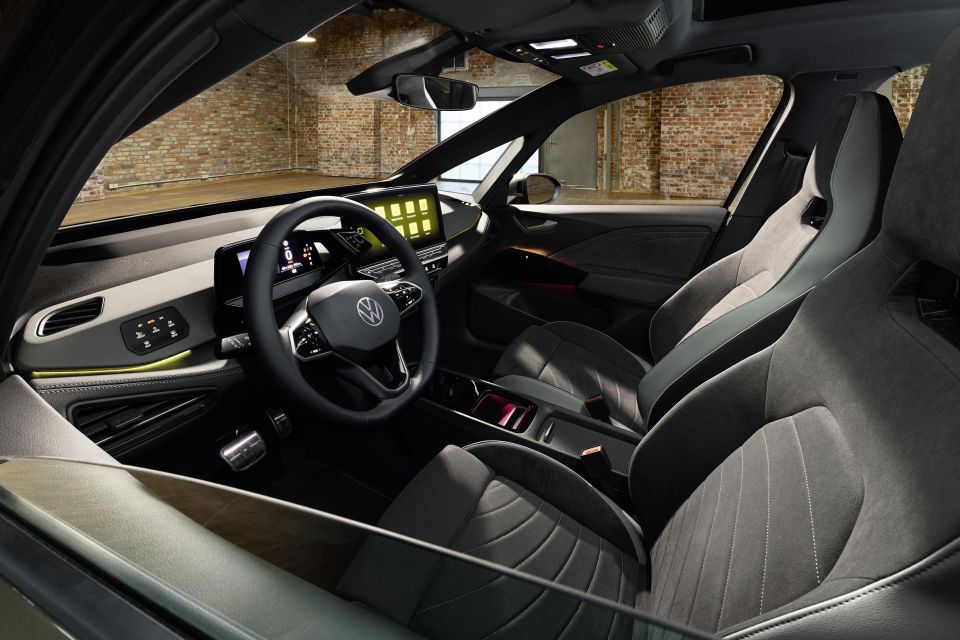

Josh Nevett
2025 Bentley Bentayga review
5 Days Ago
The Volkswagen ID.3 electric hatch is finally set to come to Australia as early as 2024 in updated guise, with a nicer interior and refreshed tech.

News Editor


News Editor
The updated Volkswagen ID.3 has been revealed in Europe, featuring a higher-quality interior and improved technology.
“We hope to see it next year [2024],” said a spokesperson for Volkswagen Australia. The local arm has previously said it would wait for the facelifted version before it introduced the ID.3.
The updated model enters production in the northern autumn of 2023.

Externally it looks little different – there’s a more aggressive front bumper, tweaked tail lights with illuminated sections on the tailgate, and new wheel designs and colours like the Dark Olivine Green pictured.
Volkswagen has also removed the black strip under the windscreen to give the bonnet a longer look, and added a black roof with matte silver trim on the edges.
It also says it has optimised aerodynamics with improved air flow around the front wheels.

The interior design at a glance looks largely the same, but Volkswagen says it has made numerous changes including greater use of soft-touch trim in response to customer feedback.
It promises more soft, foam-backed surfaces that “create a new haptic experience”.
Artvelours Eco microfibre upholstery has been applied to the seats and door panels. Volkswagen says the fabric is 71 per cent recyclate, “a secondary raw material obtained by recycling plastic waste that has previously been disposed of at least once”.

A 12-inch touchscreen infotainment system is now standard, joining the 5.3-inch digital instrument cluster and available augmented reality head-up display.
Volkswagen says it has followed customer feedback in redesigning the menu structure, promising a clearer layout. The charging menu is also now located on the first level of the display.
There’s an Electric Vehicle Route Planner that on longer journeys uses traffic information and battery level forecasts to determine when you should stop to charge.

Plug & Charge is standard, allowing the vehicle to authenticate itself and start charging as soon as you plug it in.
The ID.3 gains the option of Travel Assist with swarm data. Combining adaptive cruise control and lane-keep assist, this system – if swarm data is available – needs only one identified road lane marking to keep the vehicle in its lane on country roads.
It continues to be available only with single-motor rear-wheel drive.

58kWh and 77kWh lithium-ion battery packs are available, offering up to 546km of range according to WLTP testing.
With the smaller battery, which has up to 426km of range, it can be charged at up to 120kW using a DC fast charger; with the larger battery, this jumps to 170kW.
The Volkswagen ID.3 produces 150kW and 310Nm and can accelerate from 0-100km/h in 7.3 seconds in Pro guise.
Volkswagen Australia is prioritising the ID.4 and ID.5 SUVs, which share the same dedicated electric vehicle architecture called MEB. They’re due here before the end of this year.
Where expert car reviews meet expert car buying – CarExpert gives you trusted advice, personalised service and real savings on your next new car.
William Stopford is an automotive journalist based in Brisbane, Australia. William is a Business/Journalism graduate from the Queensland University of Technology who loves to travel, briefly lived in the US, and has a particular interest in the American car industry.


Josh Nevett
5 Days Ago


Andrew Maclean
4 Days Ago


Shane O'Donoghue
4 Days Ago


Anthony Crawford
3 Days Ago


Matt Campbell
2 Days Ago


James Wong
21 Hours Ago